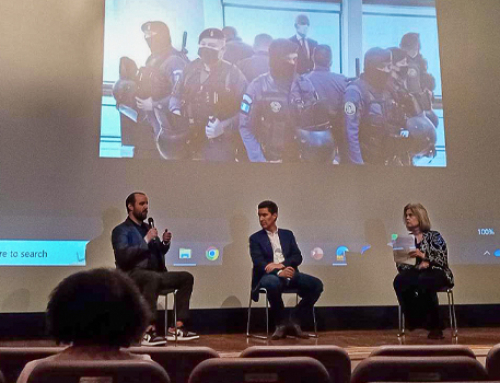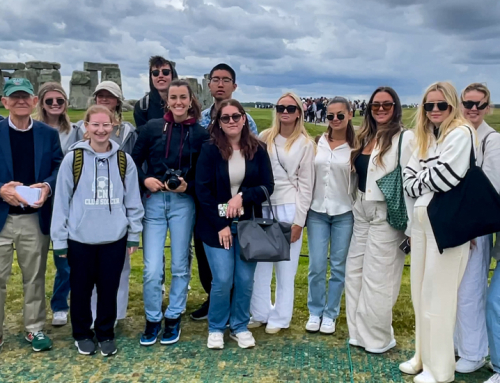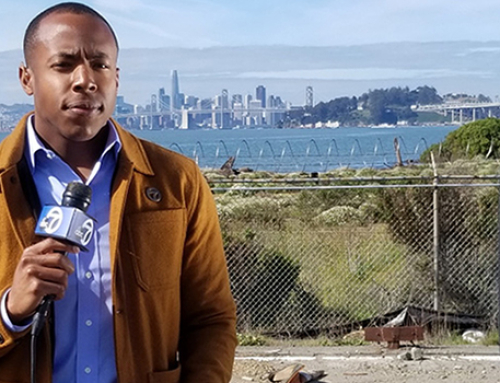By Barbara Gutierrez
More than 2,500 newspapers have shuttered their publications since 2005. University of Miami experts discuss ways to change this disturbing trend.
The United States has lost more than 2,500 newspapers since 2005, or 25 percent of the total number of papers in the country, according to a 2022 report by Northwestern University’s Medill School of Journalism.
A new report released in November by the Medill School of Journalism found that the rate of newspaper closures has accelerated, now at 2.5 closures per week with more than 130 confirmed newspaper closings or mergers in the last year.
The result is that a growing number of Americans are living in “news deserts” without community newspapers or with newspapers with diminished staffs that make it nearly impossible for their journalists to be the watchdogs of the communities’ institutions—considered to be one of the bedrocks of a healthy democracy.
This situation has prompted the University of Miami School of Communication and several other universities, including the University of Florida and the University of California Berkeley, to release a statement in support of news initiatives that will help to promote local news coverage. The consortium of universities is working on a report on this subject that will be released in February at a Knight Media Forum.
“We believe that journalism is essential for good governance, which calls upon us as citizens to be informed and engaged,” said Karin Wilkins, dean of the School of Communication. “We appreciate these kinds of opportunities to collaborate to strengthen local and community news particularly. Research demonstrates that we are more likely to trust local news and to rely on community sources of information to navigate our economies, our health systems, and our climate actions. These programs, along with the compelling student work we currently support, give students opportunities to contribute to our communities as well as gain professional experience.”
The School of Communication offers a news service called CommunityWire Miami, where graduate student reporters are assigned coverage of neighboring cities and communities throughout South Florida, including Coconut Grove, Coral Gables, and Richmond Heights.
Their stories have appeared on the school’s website, the University’s student-run Distraction Magazine, and sometimes in local newspapers including the Miami Herald and Miami Today, according to Tsitsi D. Wakhisi, associate professor of professional practice who oversees the news operation.
Wakhisi is a veteran newswoman with extensive experience in community reporting and editing as a former Miami Herald Neighbors editor. She held various other newsroom positions at newspapers.
“Covering local news is important because the residents of these cities are no longer informed as they used to be,” said Wakhisi. “The local news media don’t have the resources to staff the cities and to make sure that all of those stories that matter get covered. Those small stories can make a difference.”
Wakhisi, who is writing a textbook on the coverage of local news, and other communication faculty members contributed to the consortium report coming out later this month. She said the report will look at the successes and challenges faced by the different institutions as they run classes and on-campus newsroom operations.
Some of those challenges include how to attract and retain readers in an age where many get their news from social media and other digital sources. The schools will also investigate ways to make news more accessible as well as integrating multimedia elements into the stories, said Wakhisi.
“Decades ago, the hometown newspaper would curate the news,” she said. “Now everyone is a news curator.”
CommunityWire reporters have covered community forums with local mayors with the mission of understanding that city’s needs and concerns, said Wakhisi. One such forum in 2022 explored how local cities were faring post-pandemic. The 11 students now enrolled in the program are interviewing local mayors on the topic of the “State of their City,” said Wakhisi.
Sabrina Catalan, a second semester graduate student who works for CommunityWire, has been assigned the city of Homestead, which is her hometown. In her reporting she has found stories that show the life of everyday people and places, including one about a small Mexican bakery called La Patrona.
“It was interesting to do this,” she said. “The owner was very passionate about passing his culture to the community through his bakery, and he is very conscious of people’s needs so the prices are not very high.”
Catalan said that in today’s environment local news should be more accessible. She said that covering Homestead has helped her become much more knowledgeable about the community she lives in.
“It is certainly more important to have news about people who live near you than national news,” she said. “Those stories matter. It is important to know about the people and issues that are around you.”
This story originally appeared at https://news.miami.edu/stories/2024/02/the-future-of-local-news-is-dire.html.






